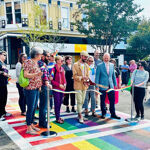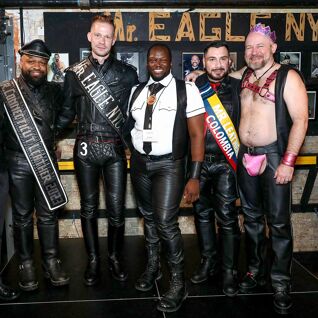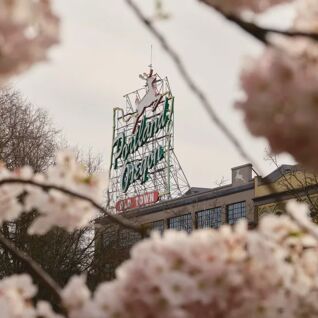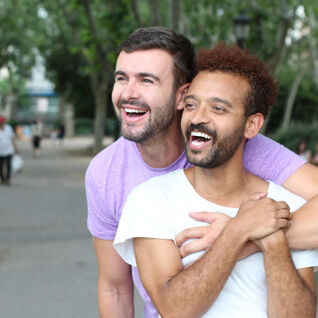
In 2016, New York City’s Christopher Park became the first designated US National Monument dedicated to the equality movement. The park is across the street from the Stonewall Inn, which remains a popular New York city LGBTQ venue (sans pandemic) and a place of pilgrimage for visitors from all over the world. Its unique ‘landmark’ status and history has secured it global fame.
Located in Manhattan’s Greenwich Village, the Stonewall has a history dating back to the 1930s, when it operated as Bonnie’s Stonewall Inn at 51-53 Christopher Street.
Related: Gay New York City
The venue had various owners over the following decades, but in 1967 was relaunched as a gay bar by three mafia gangsters – principally under the charge of one Tony Lauria (‘Fat Tony’).
It was common for the mafia to run gay bars at the time. They could sell watered-down drinks without fear of gay patrons complaining to police and could sometimes blackmail customers who they knew would not want their sexuality publicly revealed.
At the time, the Stonewall was estimated to be the largest gay bar in the US and the first to allow dancing. This made it a magnet for a younger crowd compared to other bars in New York at the time.
The history of the Stonewall Inn was forever changed when police launched a raid on the bar in the early hours of June 28, 1969.
Gay bars at the time were raided under the pretext of being “disorderly” or to have their liquor license inspected. Police could also arrest people who did not dress in keeping with their birth gender – putting trans people, anyone who cross-dressed, and drag queens, at particular risk. This included some of the patrons at the Stonewall.
However, on this burning-hot summer night, just days after a previous police raid on the bar, the patrons did something they’d not done before: they fought back and resisted arrest. Soon, a huge crowd had gathered outside the venue – many in the small garden of Christopher Park – and began throwing things at the police. The cops had to hide inside the bar to protect themselves until backup arrived.
The Stonewall riots, or Stonewall Uprising as some prefer to refer to them, came after other notable civil rights protests. The uprising went on for several consecutive nights and is credited as being the most significant step in the launch of the modern rights movement.
A year after Stonewall, a commemorative march took place in New York City. It was the city’s first Pride march. Pride marches now take place in hundreds of cities around the globe
Related: New York City gay bars
The Stonewall Inn has changed since the late 1960s. The original Inn went out of business shortly after the uprising. A bar named Stonewall returned to 51 Christopher Street between 1987 and 1989, but when that closed, the original, iconic ‘Stonewall’ vertical sign was taken down.
Another bar, Jimmy’s Stonewall Place, opened in 1990 at 53 Christopher Street, and a year later, changed its name to Stonewall. The current management has run it as the Stonewall Inn since 2006, although, because of the slight relocations and refurbishments, the original Stonewall interior is gone.

The building’s place in history has long been acknowledged. In 1999, the Stonewall was listed on the National Register of Historic Places, and in 2000 it was named a National Historic Landmark. As a US National Monument, Christopher Park is one of 128 locations in the US recognized for its cultural, historic or scientific interest to the nation.
The Christopher Park gardens also features figures by the artist George Segal. Erected in 1992, they also commemorate the Stonewall uprising.
View this post on Instagram
Related: On Stonewall Inn’s hallowed ground, you can still drink, dance & flirt
Its place in history means the bar and gardens have sometimes been places of protest (such as a rally for marriage equality in 2011). Stonewall has also played host to some big names. Madonna, Cate Blanchett and Taylor Swift have all surprised audiences by taking the stage at the bar over the last few years, as well as politicians such as Joe Biden.

























